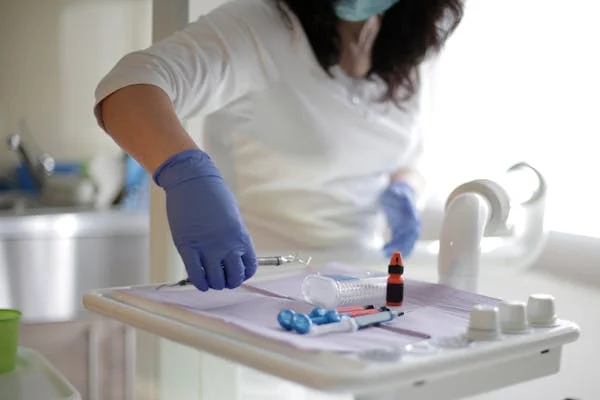Running a successful dental practice requires more than just excellent clinical skills; it involves effective marketing strategies to attract and retain patients. In today’s competitive environment, it’s essential to stand out and communicate the unique value your practice offers. This article explores proven marketing strategies that can help your dental practice grow, attract more patients, and build lasting relationships. Let’s dive into actionable tactics that can elevate your dental practice to new heights.
Understanding Your Audience
Deepening Patient Demographics
To effectively market your dental practice, it’s crucial to have a comprehensive understanding of your patient demographics. Go beyond basic demographic information and delve into more detailed aspects such as patients’ dental health needs, income levels, educational backgrounds, and family structures.
For instance, understanding that a significant portion of your patients are young professionals who prioritize quick and efficient service can help you tailor your appointment scheduling and marketing messages accordingly.
Psychographic Profiling
Psychographics go deeper than demographics by exploring the attitudes, interests, and lifestyles of your patients. This involves understanding what motivates your patients, their values, and their pain points. Conducting surveys and one-on-one interviews can provide insights into why patients choose your practice over others and what they are looking for in a dental provider.
For example, you may discover that your patients highly value eco-friendly practices and oral care products. This information can guide your marketing strategies and even influence the services and products you offer.
Utilizing Patient Data Analytics
Leverage patient data analytics to gain a more precise understanding of your audience. Analyze data from your practice management software to identify trends and patterns in patient behavior. For example, track which services are most popular, peak appointment times, and the frequency of visits.
This data can help you optimize your scheduling, improve patient retention, and develop targeted marketing campaigns. If you notice an uptick in interest for cosmetic procedures like teeth whitening or veneers, you can focus your marketing efforts on these high-demand services.
Segmenting Your Audience
Audience segmentation allows you to tailor your marketing messages to different groups within your patient base. Segment your audience by age, gender, treatment history, and lifestyle factors.
For instance, young adults might be more interested in orthodontic treatments like Invisalign, while older adults may prioritize restorative treatments such as dental implants. By creating targeted marketing campaigns for each segment, you can address specific needs and increase the effectiveness of your marketing efforts.
Creating Detailed Buyer Personas
Developing detailed buyer personas helps you visualize and understand your ideal patients better. Each persona should represent a segment of your target audience and include information about their demographics, psychographics, dental health needs, and communication preferences.
For example, you might create a persona named “Healthy Holly,” a 30-year-old health-conscious individual who values preventative care and seeks information on maintaining oral health. Use these personas to guide your marketing strategies, ensuring that your messages resonate with your target audience.
Tracking Patient Feedback
Actively seek and track patient feedback to understand your audience’s evolving needs and preferences. Use surveys, feedback forms, and online reviews to gather insights into what patients appreciate about your practice and areas where you can improve.
For example, if patients frequently comment on the friendliness of your staff or the comfort of your waiting area, highlight these aspects in your marketing materials. Conversely, if there are common complaints about long wait times, address these issues to improve patient satisfaction and retention.
Engaging with Patients on Social Media
Social media provides an excellent platform for engaging with your patients and gaining insights into their preferences. Monitor your social media channels to see what content resonates most with your audience. Pay attention to comments, likes, and shares to understand what your patients find valuable.
Engage with your audience by responding to comments and messages, and use polls and questions to gather feedback. For instance, you could ask your followers what new services they would like to see or their preferred times for scheduling appointments.
Adapting to Changing Demographics
Stay attuned to changes in the demographics of your local area. Population shifts, new housing developments, and changing economic conditions can all impact your patient base. Regularly update your marketing strategies to reflect these changes.
For example, if a new residential area is being developed nearby, consider targeted marketing campaigns to attract new residents. Offer introductory promotions or host community events to introduce your practice to the new community members.
Personalizing Patient Interactions
Personalization can significantly enhance the patient experience and build stronger relationships. Use patient data to personalize your communications, such as addressing patients by their first names in emails and sending personalized appointment reminders.
Tailor your marketing messages to reflect individual patient preferences and treatment histories. For example, if a patient has shown interest in cosmetic dentistry, send them information about the latest cosmetic treatments and special offers.
Leveraging Technology for Better Understanding
Use advanced technologies such as CRM (Customer Relationship Management) systems to manage and analyze patient interactions and data. These tools can help you segment your audience, track patient behavior, and automate personalized communications.
For example, a CRM system can automatically send follow-up emails after appointments, birthday greetings with special discounts, and reminders for upcoming check-ups. Leveraging technology ensures that your marketing efforts are efficient, targeted, and effective.
Implementing Feedback-Driven Improvements
Use the insights gained from patient feedback to make tangible improvements to your practice. This could involve enhancing your office environment, streamlining appointment processes, or expanding your service offerings.
Communicate these improvements to your patients to show that you value their input and are committed to providing the best possible care. For example, if patients have suggested more flexible appointment times, announce the introduction of extended hours through your marketing channels.
Hosting Focus Groups
Hosting focus groups provides an opportunity to gather in-depth insights from a representative sample of your patients. Invite a diverse group of patients to discuss their experiences, preferences, and suggestions for improvement.
Use these sessions to test new ideas, services, and marketing messages before implementing them widely. Focus groups can provide valuable qualitative data that complements the quantitative data from surveys and analytics.
Building a Strong Online Presence

Creating an Engaging Website
Your website is often the first point of contact between you and potential patients. Ensure it is user-friendly, mobile-responsive, and contains all the necessary information about your services, team, and location.
High-quality images, patient testimonials, and an easy-to-navigate layout can enhance the user experience. Make sure to include a clear call to action, such as booking an appointment or contacting your office. An online booking system can streamline the process for new and existing patients.
Search Engine Optimization (SEO)
SEO is critical for driving organic traffic to your website. Optimize your website for relevant keywords such as “family dentist near me,” “cosmetic dentistry,” or “emergency dental care.” Create high-quality content that answers common questions and addresses the concerns of your target audience.
Regularly update your blog with informative articles on dental health, treatment options, and patient success stories. Building backlinks from reputable sources can also improve your search engine rankings.
Local SEO
Local SEO is particularly important for dental practices, as most patients will be looking for services in their area. Ensure your practice is listed on Google My Business and other local directories.
Encourage satisfied patients to leave positive reviews, as these can significantly impact your local search rankings. Use local keywords in your content and ensure your name, address, and phone number are consistent across all online platforms.
Leveraging Social Media
Choosing the Right Platforms
Not all social media platforms will be equally effective for your practice. Focus on platforms where your target audience is most active. Facebook, Instagram, and LinkedIn are typically good choices for dental practices. Create business profiles on these platforms and regularly post updates about your services, patient testimonials, and educational content.
Creating Engaging Content
Social media is all about engagement. Share high-quality images and videos of your practice, team, and patient success stories (with permission). Create informative posts that provide valuable dental health tips and answer common questions.
Use storytelling to share the journey of patients who have achieved great results with your treatments. Running contests and giveaways can also increase your visibility and engagement. For example, you could offer a free dental cleaning to the winner of a social media contest.
Using Paid Advertising
Paid advertising on social media can help you reach a broader audience. Use targeted ads to reach specific demographics, such as parents of young children in your area.
Facebook and Instagram offer robust targeting options, allowing you to reach potential patients based on their location, interests, and behaviors. Regularly monitor the performance of your ads and optimize them for better results.
Email Marketing
Building an Email List
Email marketing is a powerful tool for maintaining communication with your patients and nurturing leads. Start by building an email list through various touchpoints, including your website, social media profiles, and in-office sign-up forms.
Offer incentives such as free dental health guides, discounts on first visits, or entry into a giveaway to encourage sign-ups. Ensure that your sign-up process is straightforward and clearly communicates the benefits of subscribing.
Crafting Valuable Content
Send regular newsletters that provide valuable content to your subscribers. This could include dental health tips, updates about your practice, special promotions, and patient testimonials. Personalize your emails to make them more relevant to each recipient.
For example, send reminders for regular check-ups, information about upcoming appointments, or birthday greetings with special offers. Use compelling subject lines to increase open rates and clear calls to action to drive engagement.
Automated Email Campaigns
Set up automated email campaigns to nurture leads and keep your patients engaged. For instance, when a new patient signs up, send a welcome email followed by a series of emails that introduce your practice, highlight your services, and provide useful dental health information.
Automated reminders for appointments or follow-ups after treatments can also enhance the patient experience. For example, “Hi [Name], it’s time for your six-month check-up! Book your appointment today.”
Customer Reviews and Testimonials
Strategically Timing Review Requests
The timing of your review requests can significantly impact the likelihood of patients leaving positive feedback. Request reviews when the patient’s experience is fresh in their mind. Right after a successful treatment or a particularly positive visit is an ideal time.
For example, send a follow-up SMS or email within 24 hours of their appointment, expressing gratitude for their visit and politely asking for a review. An example message might be, “We hope you had a great visit today at [Your Practice]. Your feedback helps us improve our services. Could you please leave us a review here: [link]?”
Simplifying the Review Process
Make the review process as straightforward as possible to encourage more patients to leave feedback. Provide direct links to your review profiles on platforms like Google, Yelp, and Facebook. Include step-by-step instructions in your request messages, showing how easy and quick it is to leave a review.
The less effort it requires, the more likely patients are to complete it. For example, “Click here to leave a quick review on Google: [link]. Your feedback means a lot to us!”
Leveraging Positive Reviews for Marketing
Positive reviews are powerful marketing tools. Showcase them prominently on your website’s homepage and testimonials page, and highlight them in your social media posts. Consider using excerpts from glowing reviews in your email newsletters and printed marketing materials.
For instance, create a section on your website called “Patient Stories” where you feature detailed testimonials and success stories, including before-and-after photos where applicable. These stories provide social proof and build trust with potential patients.

Encouraging Video Testimonials
Video testimonials are even more impactful than written reviews because they offer a personal, authentic touch. Encourage satisfied patients to share their experiences on video. You can set up a comfortable, private area in your office where patients can record a short testimonial after their appointment.
Alternatively, provide guidelines for patients to record testimonials at home and send them to you. Share these videos on your website, YouTube channel, and social media platforms. For example, “Watch [Patient Name]’s journey to a brighter smile with us: [link].”
Responding to Reviews
Engage with your reviews, both positive and negative. Responding to reviews shows that you value patient feedback and are committed to continuous improvement. Thank patients for their positive reviews and acknowledge specific compliments. For negative reviews, respond professionally and empathetically, offering to resolve any issues.
This can turn a negative experience into a positive one and demonstrate your dedication to patient satisfaction. For example, “Thank you for your feedback, [Patient Name]. We’re glad you had a great experience. We look forward to seeing you again!”
Implementing Feedback for Improvement
Act on the feedback you receive from reviews to improve your practice. If patients frequently mention long wait times, consider revising your scheduling system or adding more staff during peak hours. If cleanliness or comfort is a common praise, continue to emphasize these strengths in your marketing.
Share updates with your patients about changes you’ve made based on their feedback. For example, “We’ve heard your feedback about wait times, and we’re happy to announce new measures to ensure faster appointments.”
Highlighting Expertise and Specializations
Use reviews and testimonials to highlight your expertise and specializations. If patients frequently praise your cosmetic dentistry, orthodontics, or pediatric care, feature these testimonials prominently.
This not only builds credibility but also attracts new patients looking for specific treatments. Create dedicated pages on your website for each specialization, filled with relevant testimonials and success stories. For instance, “Read why patients love our cosmetic dentistry services: [link].”
Integrating Reviews into SEO Strategy
Incorporate reviews into your SEO strategy to improve your search engine rankings. Positive reviews on platforms like Google can boost your local SEO, making it easier for potential patients to find your practice.
Use keywords related to your services in your responses to reviews, as this can help improve your visibility. For example, “Thank you for your kind words about our teeth whitening services, [Patient Name]. We’re thrilled you love your brighter smile!”
Using Reviews in Advertising Campaigns
Leverage positive reviews and testimonials in your advertising campaigns. Include snippets of glowing reviews in your Google Ads, Facebook Ads, and other online advertising platforms.
Highlight specific aspects that resonate with potential patients, such as exceptional customer service, advanced technology, or comfortable office environment. For example, an ad might say, “See why our patients rate us 5 stars for our friendly staff and state-of-the-art facilities. Book your appointment today!”
Encouraging Reviews through Loyalty Programs
Incorporate review requests into your loyalty programs. Offer incentives such as discounts, reward points, or entry into a prize draw for patients who leave a review. This not only encourages more feedback but also strengthens patient loyalty. For instance, “Earn 100 reward points by leaving a review of your recent visit. Click here to share your experience: [link].”
Highlighting Diverse Patient Experiences
Showcase a diverse range of patient experiences to appeal to a broader audience. Highlight testimonials from different age groups, backgrounds, and treatment types. This inclusivity can make your practice more relatable and welcoming to potential patients. For example, feature testimonials from families, professionals, and seniors, each emphasizing different aspects of your services.
Conducting Regular Review Audits
Regularly audit your reviews to identify trends and areas for improvement. Track the volume and sentiment of reviews over time to understand how patient perceptions are evolving.
Use this data to inform your marketing strategies and operational improvements. For example, if you notice a surge in positive reviews about a new service, consider increasing your marketing efforts for that service.
Educating Patients on the Importance of Reviews
Educate your patients on the importance of reviews for your practice. Let them know that their feedback not only helps you improve but also assists other patients in making informed decisions.
Display signs in your office and include messages in your email communications to encourage reviews. For example, “Your feedback matters! Help us continue to improve by sharing your experience. Leave a review here: [link].”
Showcasing Review Milestones
Celebrate review milestones with your patients to foster a sense of community and achievement. For example, if you reach 100 five-star reviews, share this achievement on your website and social media.
Thank your patients for their support and encourage them to keep providing feedback. For instance, “We’ve reached 100 five-star reviews! Thank you to all our wonderful patients. Keep sharing your experiences to help us serve you better.”
Community Involvement and Networking
Participating in Local Events
Engaging with your local community can enhance your practice’s visibility and build relationships. Participate in local health fairs, school events, and community festivals.
Set up a booth where you can offer free dental screenings, distribute educational materials, and answer questions about dental health. These events provide opportunities to connect with potential patients face-to-face and demonstrate your commitment to the community.
Supporting Local Causes
Supporting local causes and charities can enhance your practice’s reputation and foster goodwill in the community. Sponsor local sports teams, participate in charity runs, or donate to local non-profits.
Highlight your community involvement on your website and social media to show your commitment to making a positive impact. This not only builds brand loyalty but also creates opportunities for positive publicity.
Networking with Other Healthcare Providers
Building relationships with other healthcare providers can lead to valuable referral partnerships. Reach out to local doctors, pediatricians, and specialists to establish mutually beneficial referral agreements.
Provide them with informational materials about your services and offer to reciprocate by referring your patients to their practices. These partnerships can expand your patient base and strengthen your professional network.
Content Marketing

Developing a Content Strategy
Content marketing is an effective way to educate your audience, build trust, and improve your SEO. Start by developing a content strategy that outlines the types of content you will create, the topics you will cover, and the channels you will use to distribute your content.
Focus on creating high-quality, informative content that addresses the needs and concerns of your target audience.
Creating Blog Posts
Regularly publishing blog posts on your website can drive traffic and establish your practice as a thought leader in dentistry. Write about a variety of topics, such as the benefits of different dental treatments, tips for maintaining oral health, and answers to common patient questions.
Use keywords strategically to improve your search engine rankings and attract organic traffic. Share your blog posts on social media and include them in your email newsletters to reach a wider audience.
Producing Video Content
Video content is highly engaging and can effectively convey complex information. Create videos that explain dental procedures, showcase patient success stories, and provide dental health tips.
Consider producing a series of short videos that address common questions and concerns. Post these videos on your website, YouTube, and social media channels to increase your reach and engagement.
Utilizing Infographics
Infographics are a visually appealing way to present information and can be easily shared on social media. Create infographics that explain the dental treatment process, highlight the benefits of good oral hygiene, or provide dental care tips.
Use them in your blog posts, share them on social media, and include them in your email newsletters. Infographics can help simplify complex topics and make your content more accessible and engaging.
Conclusion
Marketing your dental practice effectively requires a combination of strategic planning, understanding your audience, and leveraging modern marketing tools. By implementing the proven strategies discussed in this article, you can significantly enhance your practice’s visibility, attract new patients, and build lasting relationships.
Understanding your audience is the foundation of all successful marketing efforts. By deeply analyzing patient demographics, psychographics, and behaviors, you can tailor your marketing messages to meet their specific needs and preferences. Building detailed buyer personas and segmenting your audience ensures that your communications are relevant and impactful.
Read Next:
- Innovative Marketing Strategies for Insurance Agents
- Catchy Name Ideas for Digital Marketing Companies
- Creative Name Ideas for Marketing Companies
- Effective Marketing Strategies for Commercial Real Estate
- Marketing Strategies to Grow Your Small Restaurant





















Comments are closed.